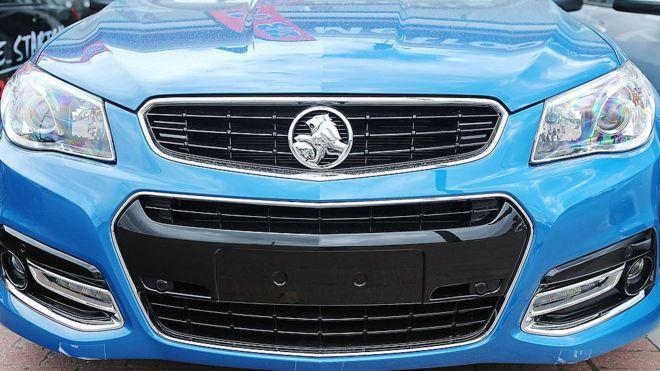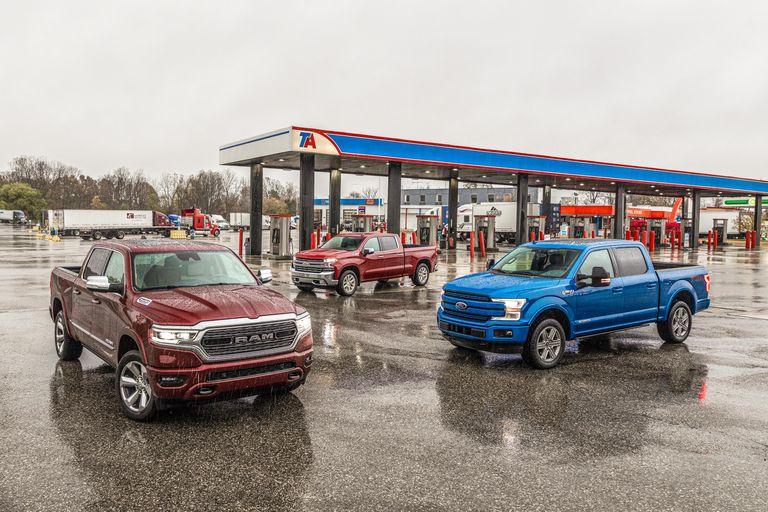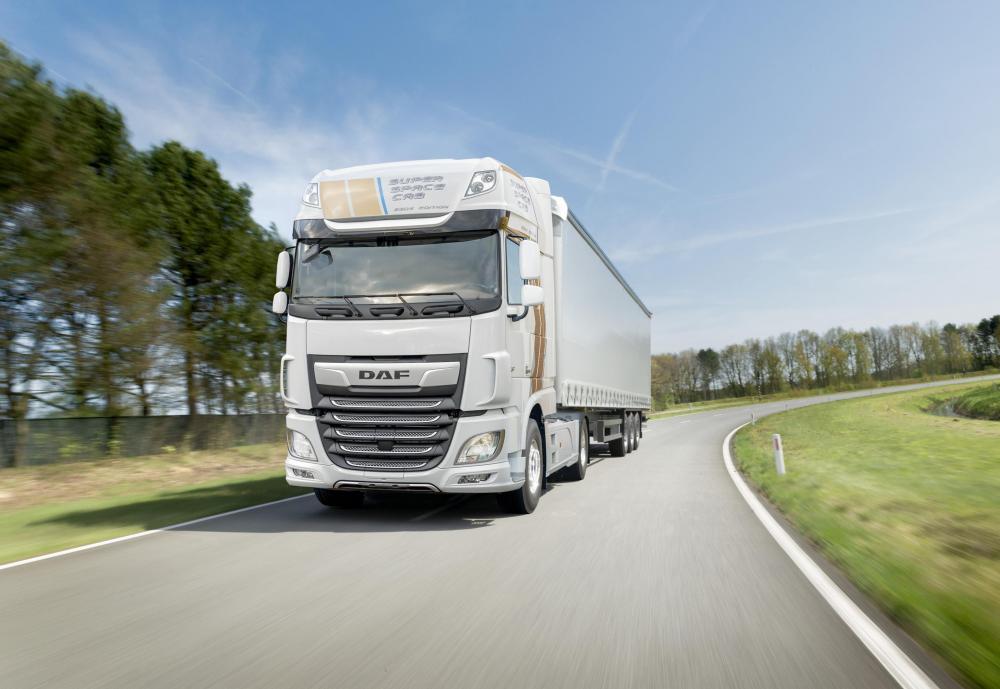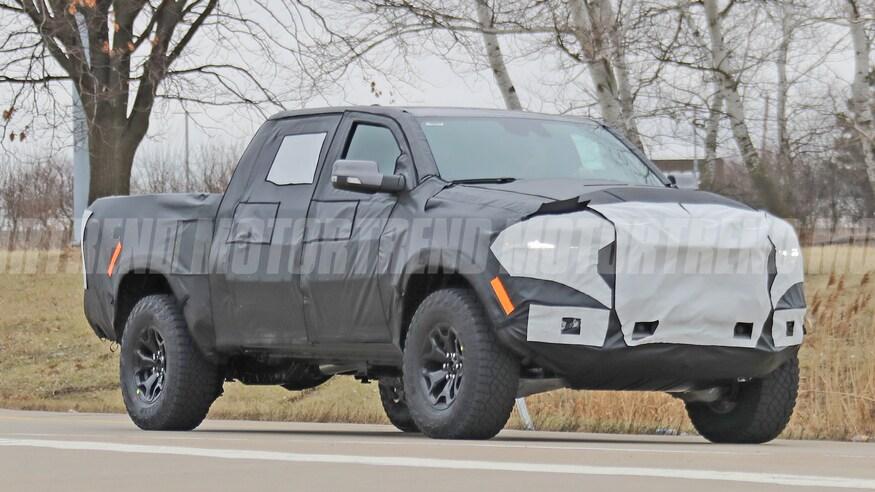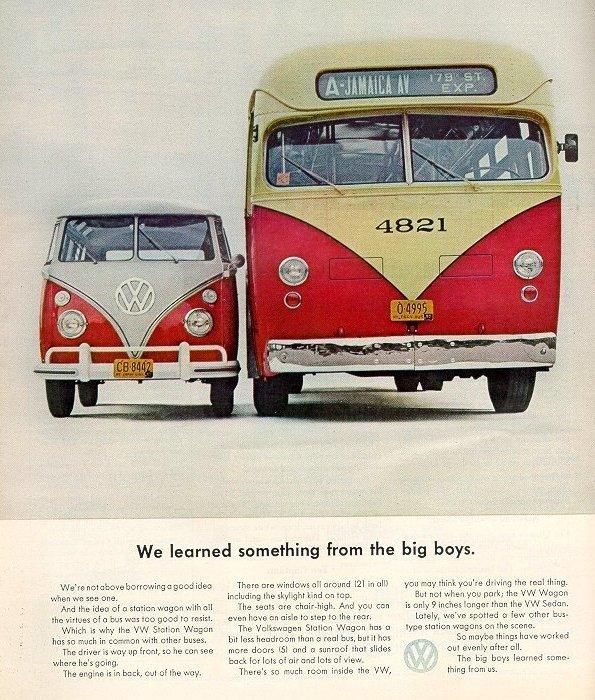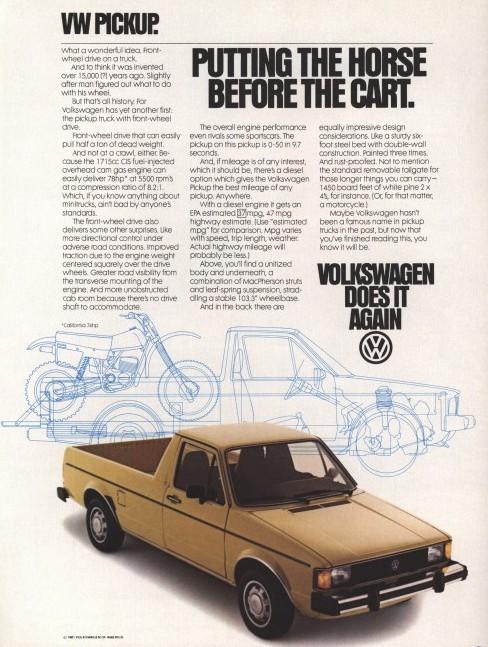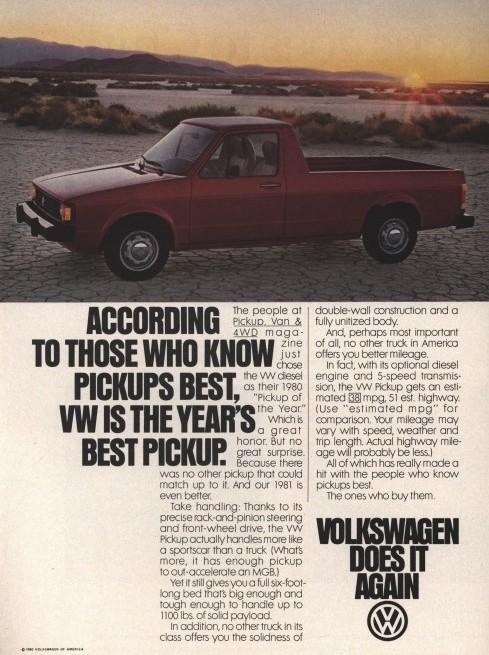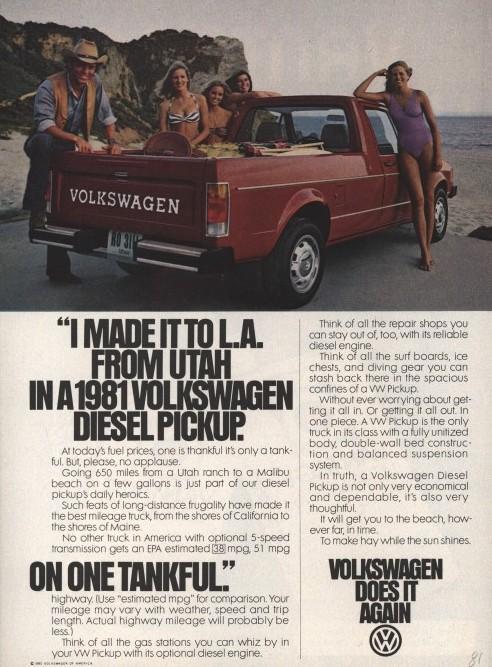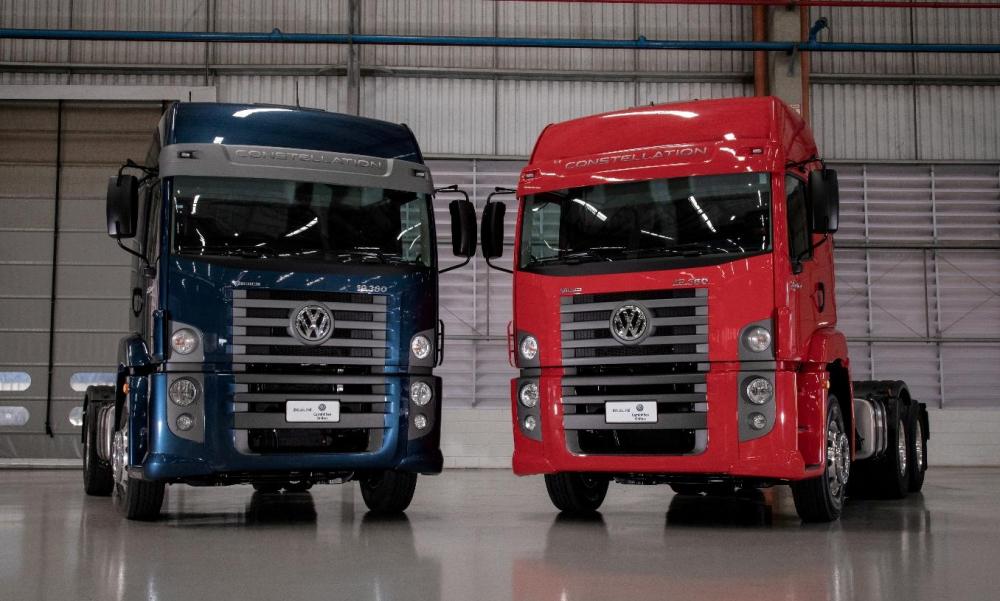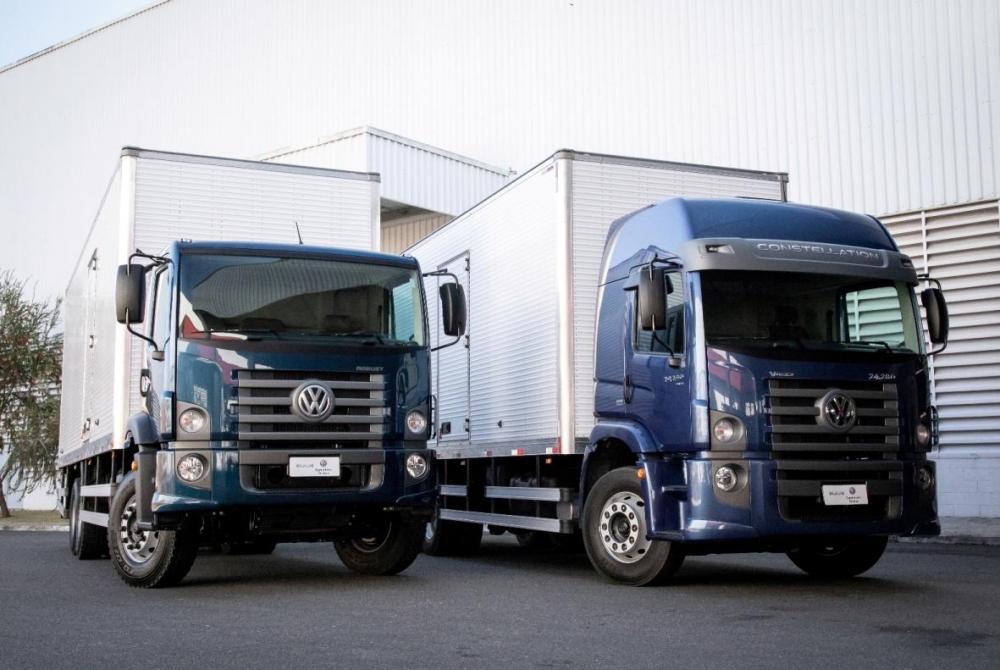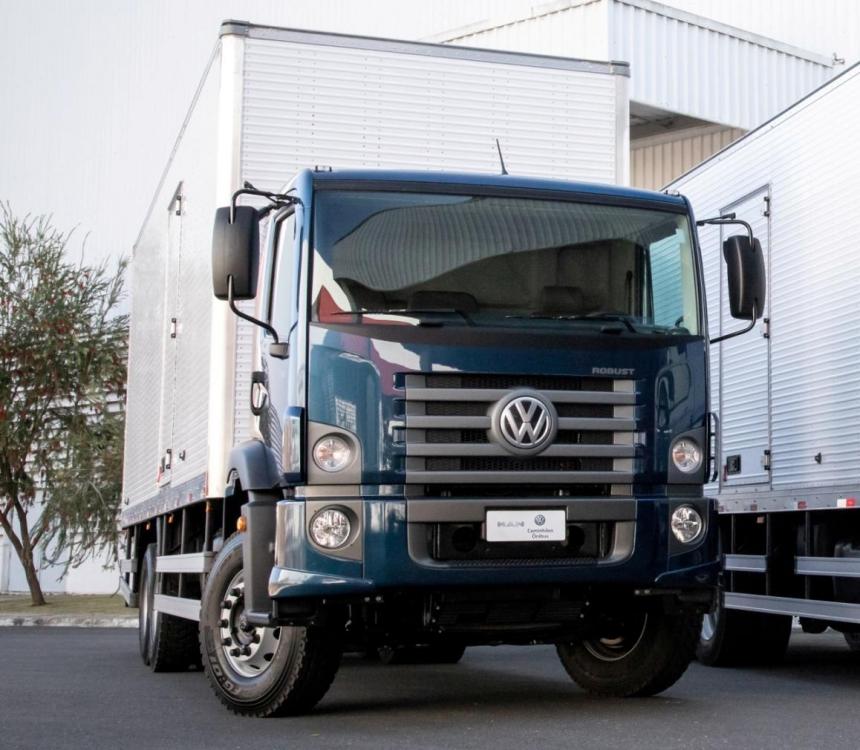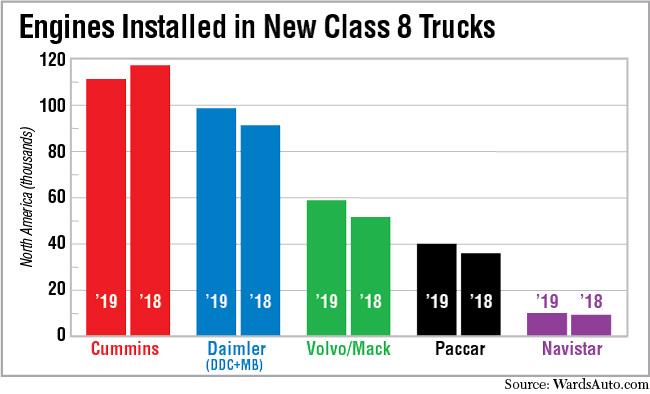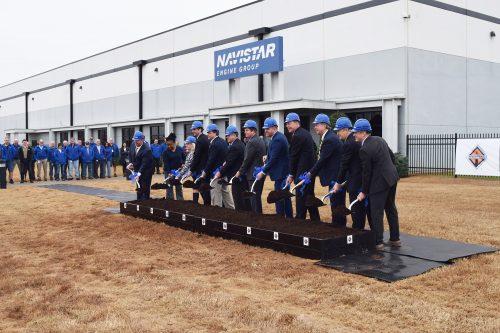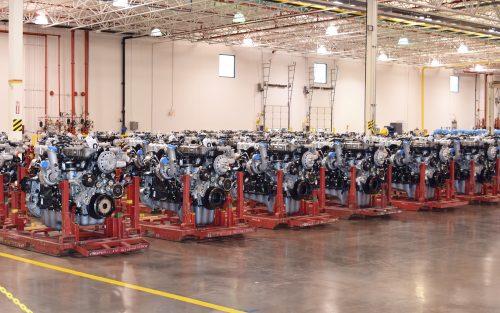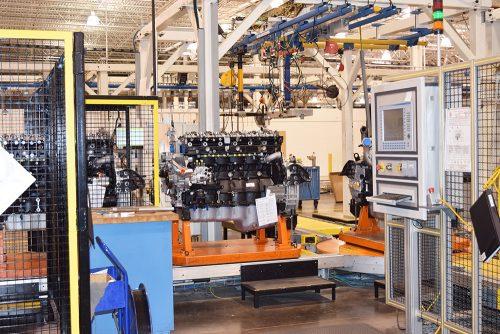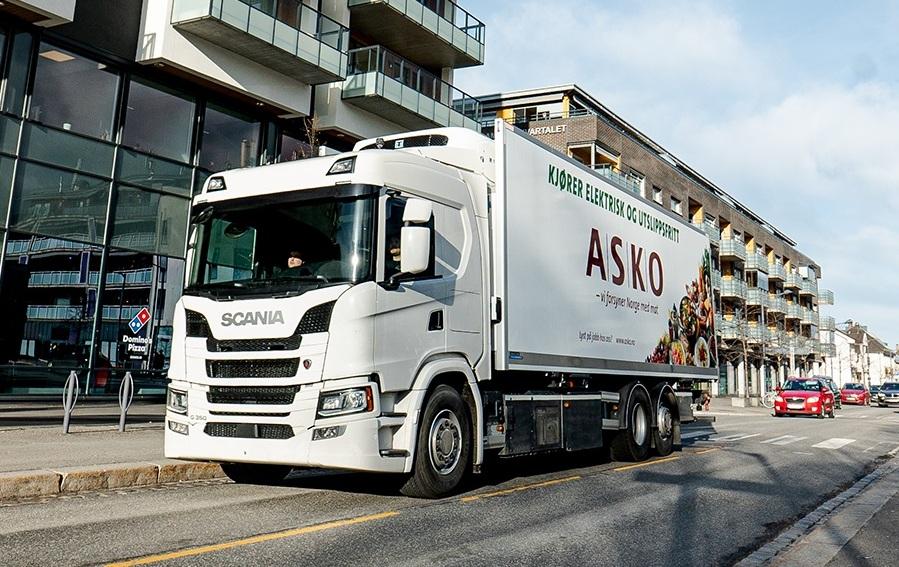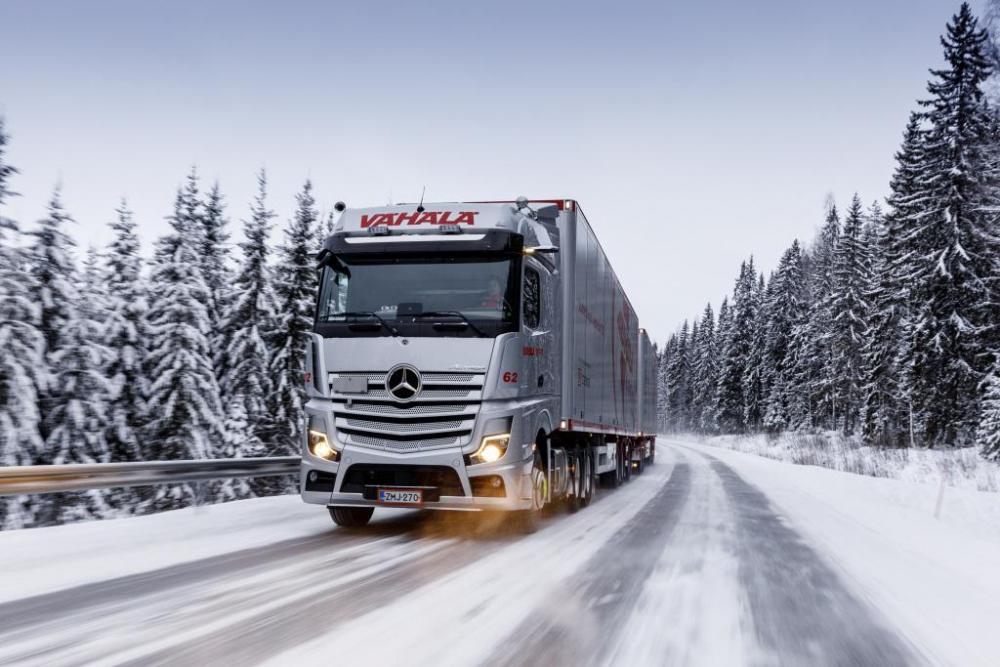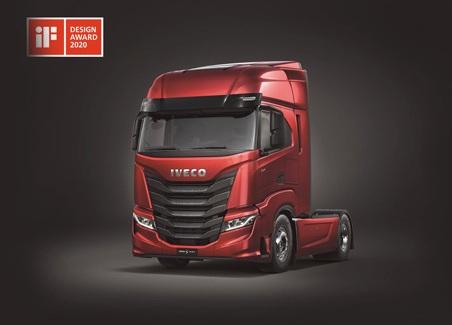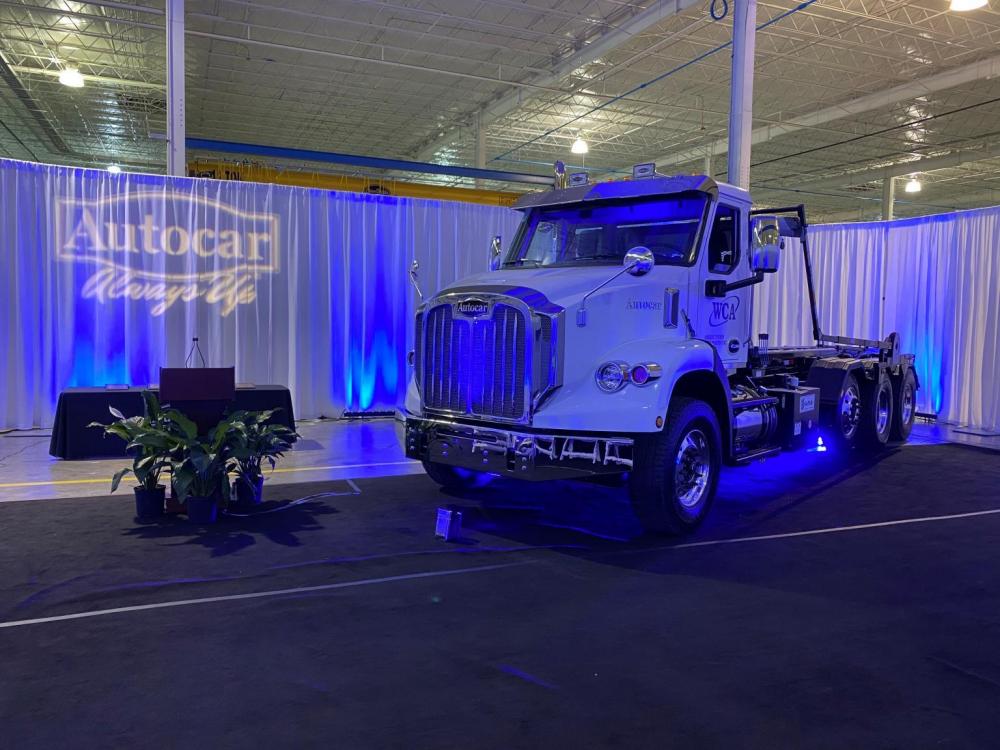
kscarbel2
Moderator-
Posts
18,935 -
Joined
-
Days Won
114
Content Type
Profiles
Forums
Gallery
Events
Blogs
BMT Wiki
Collections
Store
Everything posted by kscarbel2
-
BBC / February 17, 2020 General Motors has said it will retire the iconic Australian car brand Holden as it leaves more markets. The American car giant said it will wind down Holden sales, design and engineering operations in Australia and New Zealand by next year. It also said China's Great Wall Motors had agreed to buy GM's manufacturing plant in Thailand. The announcement comes three years after GM ended manufacturing in Australia. GM's CEO Mary Barra said: "I've often said that we will do the right thing, even when it's hard, and this is one of those times." The statement did not say how many jobs would be lost as a result of the move but reports suggest it will mean up to 600 layoffs. In response to the news, Australian Prime Minister Scott Morrison said: "I am disappointed but not surprised. But I am angry, like I think many Australians would be. "Australian taxpayers put millions into this multinational company. They let the brand just wither away on their watch. Now they are leaving it behind," he added. GM President Mark Reuss said the company had explored ways to keep the Holden brand but had decided that it would cost too much to remain in the "highly fragmented right-hand-drive market". It comes as GM is accelerating its exit from unprofitable markets as it focuses on the US, China, Latin America and South Korea. The move will end 160 years of the Holden name's association with Australia. The company was founded as a saddle maker in South Australia in 1856 before it started building vehicles in 1908. Holden was bought by GM in 1931, beginning their 89-year history as a combined entity. Late last year the company also said it would stop selling its most iconic model the Commodore after more than four decades. At the end of 2013 Holden announced that it would halt production in Australia and start importing vehicles from its overseas plants. GM said a strong Australian currency, high manufacturing costs and a small domestic market were among the reasons behind its decision. The ending of Australian production of Holdens in 2017 resulted in nearly 2,900 job losses. .
-
Chevy vs. Ford vs. Ram K.C. Colwell, Car & Driver / January 17, 2020 We know what you're thinking: Didn't you just pick the Ram 1500 as a 10Best winner? Why are you comparing these trucks again so soon? Well, upsets happen all the time, and when you narrow the focus to a single model rather than the entire range, it's possible that the Ford F-150 or Chevy Silverado 1500 beats the Ram. So we lined up the Big Three's new half-ton diesels and let them slug it out. It was a fair fight. We gathered four-door crew-cab versions with four-wheel drive and two-speed transfer cases, five-seat leather interiors, and five-figure asking prices that start with "6." In other words: These aren't strictly work trucks. These pickups fulfill a daily mission not unlike a large SUV, albeit with heftier towing capacities (see chart below). A diesel in a Ram 1500 is nothing new. The EcoDiesel brand has already been through an emissions scandal involving its VM Motori–supplied 3.0-liter V-6. Unavailable last year, the turbo-diesel is back with a bit more power. It now makes 260 ponies and (more important to the coal-rolling community) 480 pound-feet of torque, gains of 20 horses and 60 pound-feet over the previous gen. The EcoDiesel, which comes with a mandatory 3.92:1 final drive, is a $5090 upgrade over the base gas V-6. Ford was second to jump on the light-duty-diesel bandwagon when it began offering its own turbo 3.0-liter V-6 for the 2018 model year. The engine comes from Europe, a cousin of the turbo-diesel that Jaguar Land Rover installs in Range Rovers, among others. It is the weakling in this test, with 250 horsepower and 440 pound-feet. Ford complicates things by offering the diesel in different trims for different amounts. In our test truck, it's a $4750 option. Newest on the scene is Chevrolet's—wait for it—3.0-liter six. Guess what? It was also developed in Europe, but unlike the others, it is wholly new and arranges the cylinders in a straight line. Just as Ford has repurposed the "Power Stroke" branding of its heavy-duty engine for its light-duty six, Chevy christens this turbo-diesel "Duramax" in the hope that you'll make a mental connection to the 910-lb-ft monster that goes into the brand's HD trucks. The Duramax makes the most power of the bunch, with 277 horses on tap, and the second-most twist, with 460 pound-feet. Also like Ford's setup, the cost for the diesel option depends on trim. In a Silverado LTZ, it's a $2495 charge. The Ford and Chevy share a transmission, but you would never know it by driving them. It isn't so much that the Ford's version is conspicuous, it's that the Silverado's works as seamlessly as the inline-six that turns it. Chevy's powertrain shines all the time but never so brightly as when it's hooked to a 6650-pound trailer. If all we ever did with one of these trucks was tow, the Duramax might be enough to win us over. It is that nice. The Silverado also tops a lot of objective stats, including payload, as-tested price, and acceleration. It is the lightest in the test, too, which pokes a rusty hole in Ford's aluminum-body strategy. Even the fully kitted Ram 1500 is lighter than the F-series pickup. With big fuel tanks and efficient diesel engines, these trucks offer long-haul range and, in the Ram's case, near-luxury-car comfort. But while this truck, equipped with the Duramax and the Z71 off-road package, rides better than other current-gen Silverados we've tested, it is no match for the Ram's supple ride and adept handling. The scary thing for the competition is that the Ram isn't just good for a truck; it's just plain good. The F-150, on the other hand, never settles down. It bucks, wiggles, shimmies, and hops endlessly after an otherwise minor bump in the road. We thought attaching a trailer might calm the ride, but it didn't. Objectively, Ram's EcoDiesel isn't the best at doing truck things. As the charts reveal, the Ram's payload is lower than the Chevy's, and its tow rating is topped by the Ford's. But the differences are negligible. About the only gripe anyone had with the Ram was its labored feeling when trying to keep a 70-mph pace with a trailer in tow; 65 was just fine. The real knockout punch came at the fuel pump. Returning 30 mpg, the Ram bests its competitors by a wide margin. We should note that there is a slim but very real possibility that the Ram didn't experience a single particulate-filter-regen event during the miles we logged. These periodic self-cleanings—think colon blow for your exhaust—consume extra fuel. Even if we doubled the worst-case scenario, adding half a gallon of diesel to our tally, the Ram would still have averaged a best-in-test 27 mpg. Towing economy was essentially a wash, with only a 1-mpg spread among the pickups. In the end, this wasn't anything more than a sparring match for the 10Best-winning Ram 1500. The upset will have to wait. We're sure that Ford and Chevy will mount another title challenge soon enough. 1st Place: Ram 1500 EcoDiesel Highs: Remarkable ride and handling, as polished as a luxury car, sips fuel. Lows: A little labored with a moderate trailer, but only a little. 2nd Place: Chevrolet Silverado 1500 Duramax Highs: Velvety engine, silky trans, perfect brake feel. Lows: Bland exterior, uninspired interior, can't match the comfort of the segment's best. 3rd Place: Ford F-150 Power Stroke Highs: Tow-capacity champ, aluminum body won't rust. Lows: Heavy despite prevalent aluminum, atrocious ride, chintzy interior. .
-
I’ll say one thing, the new 1500 is by far the leader across the board.
-
DAF Trucks Press Release / February 13, 2020 DAF Trucks unveils the XF Super Space Cab Celebration Edition. With this luxurious and specially striped version of the largest and most comfortable cab on the market, DAF is celebrating the production of the 250,000th DAF XF with Super Space Cab. Drivers are treated to a luxuriously trimmed interior, including among other things the cognac-coloured leather package as standard. “How can we offer the driver the very highest comfort?” This question led in 1985 to the introduction of the DAF 3600 Space Cab, which set the new level in terms of interior space and thus driver comfort thanks to the raised roof. In 1994, DAF went even further: the Super Space Cab, with which DAF again set new standards. Ideal place for the drive The cab of the latest DAF XF Super Space Cab is the most ideal place for every driver to work, live and sleep. Unsurpassed ergonomically, beautifully decorated and extremely spacious. The cab has a volume of no less than 12.6 m3 making it the most spacious on the market. The XF Super Space Cab offers an impressive standing room of 2.23 metres and with no less than 925 litres of storage space. It is equipped with two generous beds, the lower one is 80 cm wide and 2.20 metres long, and comes with a deep mattress as standard. It is not without reason that half of all DAF XFs are ordered as Super Space Cab. The DAF XF Super Space Cab Celebration Edition is available as 4x2 FT and 6x2 FTG tractor variants as well as in all rigid configurations. In terms of power unit, the PACCAR MX-11 with 330 kW/450 hp can be selected or the PACCAR MX-13 engine, with ratings of 355 kW/480 hp or 390 kW/530 hp. The trim of this ‘special’ is country specific: each version is configured to suit local customer preferences – but every Celebration Edition is equipped with the beautiful Exclusive interior, including the beautiful cognac-coloured leather package. And the bed always has DAF’s 15 cm deep comfort mattress for maximum sleeping comfort. In addition, things like the fast DAF TNR navigation system, the most extensive climate control including operation from the rear wall and DAF's impressively large refrigerator come as standard. The DAF XF Super Space Cab Celebration Edition is now available at all official DAF dealers. .
-
Landi Renzo USA awarded $600K for natural-gas Ford 7.3L engine Green Car Congress / February 13, 2020 California’s South Coast Air Quality Management District’s (South Coast AQMD) Clean Fuel Funds and Southern California Gas Company (SoCalGas) have awarded a combined $600,000 ($300,000 each) to Landi Renzo USA for Landi Renzo’s 7.3L Near-Zero natural gas engine development program, which covers Class 4-7 vehicles. Landi Renzo USA is the US subsidiary of Landi Renzo Group. This collaboration will modify the recently introduced Ford 7.3-liter gasoline engine and demonstrate a 0.02 g/bhp-hr NOx California Air Resources Board (CARB) and Environmental Protection Agency (EPA) certified engine for commercial vehicle applications. The project is well underway with expected completion by Q2 2020. The new Ford 7.3-liter V8, introduced first for the Super Duty F-250 and F-350 pickup models in August 2019, features an overhead valve architecture that generates power low in the rev range to help get heavier loads moving sooner and with greater confidence. It also features a variable-displacement oil pump, extra-large main bearings, forged steel crankshaft for durability, and piston cooling jets to help manage temperatures under heavy load. The Ford base engine will offer fleets a Near-Zero Natural Gas engine for the F-450, F-550, F-650, F-750, F-53, F-59, and E-450 applications. This Near-Zero Natural Gas engine is packaged for shuttle buses (e.g., hotel, airport, rental car) box trucks, tow trucks, service body trucks, large package trucks and a host of other vocational offerings. Many of these vehicles will be able to take advantage of various grant funding opportunities. To date, the biggest gap in the Near-Zero Natural Gas offering has been the work truck market. In addition to operating on Compressed Natural Gas (CNG), this engine will also be able to utilize Renewable Natural Gas (RNG). RNG fuel is organic-based and is carbon net-negative when used by natural gas trucks. RNG provides a 70% reduction in greenhouse gases versus gasoline or diesel. The Near-Zero Natural Gas vehicles come directly from the Ford manufacturing plant to Landi Renzo USA’s facility in Torrance or an Authorized Distributor, where they are converted with the Landi Renzo’s Eco Ready CNG system. Landi Renzo USA is the only approved Ford QVM (Qualified Vehicle Modifier) developer and installer for CARB. As an OEM-approved system under Ford’s QVM program, the original warranty remains fully in place.
-
Rebel TRX a Hellcat pickup Vince Bond Jr., Automotive News / February 16, 2020 Throw a Hellcat engine in a Ram, and things get interesting. Ram already upended the pickup race by using a mix of luxury and capability to outsell the Chevrolet Silverado for the first time last year. Now the Fiat Chrysler Automobiles brand has a chance to set a new standard for performance in the pickup space with the Ram 1500 Rebel TRX, which is expected to give consumers major punch right from the factory with 707 hp. If rumors of a Hellcat-equipped TRX hold true, that level of output would leapfrog the 450-hp Ford F-150 Raptor and make the competition for bragging rights in the pickup world even more intense. FCA has teased the idea for years, and a Rebel TRX spotted in camouflage signals that the Raptor is about to get new competition. Ram introduced the Rebel TRX concept during the State Fair of Texas in 2016. FCA said the concept "has an exterior design that radiates focused aggression." That model was powered by a 6.2-liter Hemi V-8 delivering 575 hp. The TRX could potentially go on sale later this year. "There's a redesigned F-150 right around the corner, and I wouldn't be surprised if Ford comes out with something to answer FCA on this," said Kelsey Mays, Cars.com's senior consumer affairs editor. "There's a lot you can do with forced induction, with supercharging and turbocharging engines," Mays said. "You can really get a lot more power out of an existing engine. Ford's got a lot in its wheelhouse. Certainly, we're seeing that right now on Mustang." Spreading the muscle History has shown that FCA is indiscriminate when it comes to spreading muscle across its lineup — in cars, pickups and utility vehicles. After introducing the Hellcat engine in the Challenger and Charger, FCA dropped it into the Jeep Grand Cherokee to create the Trackhawk, a blistering SUV option that costs nearly $90,000. In the early 2000s, Chrysler pushed the envelope with the Dodge Ram SRT-10, a pickup outfitted with a Viper engine. It called the SRT-10 the "Viper of pickup trucks" and earned a Guinness Book of World Records entry for "World's Fastest Production Pickup Truck." With the added horsepower, Mays believes a Rebel TRX would top the Raptor's $54,800 base price by as much as $12,000. He thinks 20,000 vehicles annually is doable for the TRX, which would serve as a halo for the Ram lineup. Although the Rebel line is targeted at off-road enthusiasts, Mays doesn't see it eating into Jeep Gladiator sales. "This is an engine that they've already scaled out to several other products, and so if it's not a hit, and actually shoppers don't want it, it's not a huge loss for FCA in terms of just development," Mays said. "So putting it out there and seeing what the market will bear, they could probably afford to come in from a higher price point and see what happens." Brian Moody, executive editor for Autotrader, would like to see a bare-bones version of the TRX aimed at true off-road buyers for around $45,000. An "ultra-base" model, he said, could forgo creature comforts such as carpeting. Moody thinks the TRX would play in multiple worlds by appealing to the muscle car crowd as well. Consumer response Ivan Drury, senior manager of insights for Edmunds, said the TRX could achieve the type of performance numbers some were hoping for when the Rebel trim debuted in 2015. With the Hellcat craze playing out so well over the years, Drury said it makes sense to bring it to Ram. Drury believes Ford still would be able to capitalize on the loyalty it has built with the Raptor, but it would have to keep an eye on how consumers react to the TRX and respond accordingly. "It's one of those things where if they do see enough trade-ins going toward FCA, if they see that halo effect that really happened with Raptor begin with FCA — if they start stealing share, they steal eyeballs — then the most logical thing to do is really up the ante," Drury said. "And, if so, they're really going to have to crank it up to tremendous proportions." The idea for the TRX came from former Ram brand chief Mike Manley, now FCA's CEO, who challenged designers and engineers to build a truck that could drive at sustained speeds of more than 100 mph off-road. In addition to the sales generated by a TRX, Ram would benefit from having an additional way to brag about its lineup relative to the competition, Drury said. "Not every one of these guys is going to take this thing off road; [they're] not going to be street-racing these things to death," he said, "but those bragging rights, I think they matter moreso in trucks than in any other segment." .
-
Volkswagen Truck & Bus enhances 2020 line-up
kscarbel2 replied to kscarbel2's topic in Trucking News
After driving the Constellation many times, I "sez" it's no problem. You'd like this truck Ted. -
Volkswagen Truck & Bus enhances 2020 line-up
kscarbel2 replied to kscarbel2's topic in Trucking News
I drove the Amarok for a time in South Africa and really liked it. Volkswagen used Macks in their advertisements on more than one occasion. . -
Volkswagen Truck & Bus enhances 2020 line-up
kscarbel2 replied to kscarbel2's topic in Trucking News
-
Volkswagen Truck & Bus Press Release / February 4, 2020 "Our trucks have conquered the market and are already preferred in their segments. Now they've gotten even better. These are the most anticipated releases of all. We started another year with the aim of continuing to make history in cargo transport," says Ricardo Alouche, vice president of Sales, Marketing and After-Sales at Volkswagen Truck & Bus. The Delivery light/medium truck range gains new members and automated manual transmissions (AMT) makes its debut. The Constellation line, the market's favorite medium and heavy truck, evolves forward with a new external and internal look. And with the largest portfolio of vocational vehicles on the market, Volkswagen Truck & Bus adds new features to the "ready for any job" Robust model line-up. Evolution of the best sellers Brazil's best-selling light/medium truck continues to evolve. This time, the solution can generate an increase in operating profit of about 10%. It is the result that can be achieved with the new version of Delivery V-Tronic available on Delivery 9.170 and 11.180 models, which are already sales leaders in their categories. The two new V-Tronic Delivery models set themselves apart and above the competition with higher levels of comfort, safety and economy while having the highest total gross weight ratings of their segments. The light truck line-up has also gained a new member with the Delivery 4.160, which replaces the 4.150. Evolution is part of Volkswagen's strategy of always being attentive to opportunities for greater operational gain for the customer. The result is seen in the new configuration: torque 18% higher and 6% more power than its competitors of the same category. Increasingly complete family A new year, new models in the family of favorite medium, heavy and extra-heavy trucks from the market. The Constellation line brings innovations in its two finishing packages. In the Prime line, durability, quiet atmosphere and plenty of comfort for longer trips are slogans. With functional design, the cabin brings news in the seats, coated with waterproof fabrics and equipped with pneumatic suspension. Adjustable steering radio and column complete the attractions of the new package, which is available in extended versions, low ceiling bed and high ceiling. In the Constellation line-up, the Robust range includes new novelties in appearance, trim and cab design. Synthetic leather seats, panel, floor and side doors with new sun shades for easy daily cleaning, plus the new cab color-matched short plastic bumper. Another evolution is in the automated V-Tronic automated manual transmission (AMT) featured on the iconic Constellation 24.280. The result is maximum control and driveability in gear changes, reduction of fuel consumption of up to 3% in the fleet average with standardization of consumption and easier maneuvering at low speed and reverse. VW Trucks and Buses has also expanded the vocational line with the all-new Constellation 32.360 8x4. The VW Constellation 25.360 is now available with a high ceiling bed cabin, 16-speed V-Tronic automated manual transmission (AMT), Prime finish package. ZF 16-speed manual transmissions are offered as optional. .
-
Transport Topics / February 12, 2020 Independent engine maker Cummins supplied the most Class 8 diesel engines in 2019. It was a mixed year that saw U.S. Class 8 retail sales climb to the highest level since 2006, but production slow and orders slide after a few months. At the same time, all truck makers sold more of their proprietary engines compared with a year earlier, except for a 37-unit decline at Mercedes-Benz. Mercedes-Benz sales in the U.S. fall under Daimler Trucks North America (DTNA) along with Detroit Diesel Corp. In 2019, Cummins notched a leading 34.8% of the total, or 112,756 out of 323,225. That was down from a year earlier when Cummins earned a top share of 38.3% with 118,857 of the 309,701 total engines. The report breaks Class 8 engines into two segments, Group 1, under 10 liters, and Group 2, 10 liters and over. Cummins’ dominance with its smaller L9 engine ensured it posted the overall lead. Cummins had an 88% share, or 25,343 engines of the total 28,829 in the Group 1 category. Others with engines in the under 10-liter category included Detroit Diesel, 1,853; Paccar Inc., 1,379; Mercedes-Benz, 210; and Hino with 40. In this group, Freightliner used the most Cummins engines at 15,403. International was next with 7,023. Detroit, Mercedes-Benz and Hino posted improvements in Group 1 in 2019 compared with a year earlier, while Paccar’s total fell from 1,742 in 2018. International had no engines in the category after posting four in 2018. Paccar makes the [DAF designed] MX engine for its Kenworth and Peterbilt subsidiaries. The figures come from a Ward’s report on North American factory sales of heavy-duty trucks, including their engines, released January 31. The Ward’s data this period reflected reporting changes involving Mexico, which included only trucks to U.S. and Canada. Ward’s also reported the Freightliner data is incomplete for North America. Last year, DTNA said the numbers it submits to Ward’s exclude Mexico volumes, without further explanation. Meanwhile, Cummins could not retain its lead from a year earlier in the Group 2 category of engines 10 liters and over, surrendering it to DTNA’s Detroit engines. “Original equipment manufacturers prioritized production of their own engines when making cuts to production in the second half of the year,” as demand stalled, Cummins CEO Tom Linebarger said during the company’s latest earnings call. In 2019, DTNA’s 10-liter and more engines hit 97,903, or 33.2% of the total 294,396 in the category. Its Mercedes-Benz engines accounted for 24 engines. Its Detroit brand made 97,903. Of those, 9,131 went into DTNA’s Western Star brand. The rest went into its market-leading Freightliner brand. A year earlier, DTNA’s Group 2 total was 90,827, or 32% of a total 283,210 Group 2 engines. Richard Howard, DTNA’s senior vice president of sales and marketing for Freightliner and Detroit, emphasized the investments the company has made in integrated powertrain that pairs Freightliner or Western Star trucks with Detroit engines, and the resulting benefits. Detroit makes 13-, 15- and 16-liter engines for Group 2. “We revealed the all-new DD15 Gen 5 late last year at the North American Commercial Vehicle show and we begin production in January 2021 to continue to deliver on the promise of performance, efficiency and maximum uptime,” Howard said. In 2019, Cummins earned a 29.6% share of Group 2 engines with 87,413. That compares with its year-earlier leading 33.9% share of the total 283,210, or 96,105 — its all-time record for the segment in terms. Cummins supplies its Group 2 engines to all OEMS, with Kenworth its largest customer followed by Peterbilt, which, respectively, used 29,416 and 25,186 engines. International used 24,099. Freightliner used 6,264. At the same time Paccar increased its own MX engines overall to 40,627 compared with 36,471 a year earlier. “Last year, we finished at 43% for engine sales with our MX engines. So that’s great. It was 47% actually in the fourth quarter,” Paccar CEO Preston Feight said during its latest earnings call. International’s own engines overall rose to 10,203 compared with 9,464 a year earlier. Its own engine is the 13-liter A26 [a version of the proven MAN D26]. “We see real growth opportunities with weight sensitive regional haulers and bulk carriers. Our 13-liter engine is the lightest in industry,” Steve Gilligan, vice president of product and vocational marketing for the North American business unit of Navistar Inc., told Transport Topics. Volvo engines — used exclusively in trucks from Volvo Trucks North America (VTNA) — increased sales to 33,391 compared with 29,468 a year earlier. Mack engines [rebadged Volvo engines] rose to 26,218 compared with 22,898 in the 2018 period. “For more than a century, Mack’s philosophy has been ‘components designed to work together, simply work better,’ which is why all Mack heavy trucks [Volvo trucks with legacy Mack cabs] come standard with Mack MP series engines,” said Roy Horton, director of product strategy for Mack Trucks. “In certain cases where we do not offer proprietary engine solutions, including natural gas-powered engines and engines for our medium-heavy duty models, we offer Cummins engine options to complement our offer. The increase in factory engine sales last year is a reflection of Mack delivering more trucks during 2019, with customers continuing to count on us for the proven performance and reliability of our Mack MP [Volvo] engines.” .
-
Tie rod ends for B-42
kscarbel2 replied to B-42's topic in Antique and Classic Mack Trucks General Discussion
You're welcome, any time ! -
Tie rod ends for B-42
kscarbel2 replied to B-42's topic in Antique and Classic Mack Trucks General Discussion
No. Steering knuckles are steering knuckles. Your tie rod ends are part numbers 10QH220P1 and 10QH221P1, which I believe are the rebuildable type. Kits used to be available, for example 204SQ17 and 204SQ21B. You need a parts book or a helping dealer. Non-rebuildable tie rod ends also existed, depending on the front axle model, such as 10QH11A/10QH12A, 10QH35/10QH36 and 10QH37/10QH38. -
Ford recalls more than 200,000 vehicles over issue that may increase crash risk Audrey Laforest, Automotive News / February 12, 2020 Ford Motor Co. is recalling more than 200,000 vehicles in the United States, Canada and Mexico because of a problem that can cause a rear toe link fracture while driving and may increase the risk of a crash. The recall covers 2013-18 Ford Flex, Ford Taurus Police Interceptor, Ford Taurus SHO and Lincoln MKT vehicles. This affects 211,207 vehicles in the U.S. and federal territories, 15,281 in Canada and about 1,400 in Mexico. Globally, Ford said it is recalling about 230 vehicles in Europe, four in Asia Pacific, one in South America and almost 14,000 in emerging markets. The automaker said it has filed a notice with NHTSA. "Affected vehicles that are exposed to frequent full rear-suspension articulation (jounce and rebound) may experience a fractured rear suspension toe link," Ford said in a statement Wednesday. This can result in "unusual vehicle handling or difficulty controlling the vehicle," Ford spokeswoman Monique Brentley told Automotive News. To fix the problem, dealers will replace the left- and right-hand rear suspension toe links with new, forged toe links. Owners will be notified March 2, Brentley said.
-
James Jaillet, Commercial Carrier Journal (CCJ) / February 12, 2020 Navistar on Tuesday officially broke ground on a planned $125 million expansion of its engine manufacturing plant in Huntsville, Alabama, where the company builds its heavy-duty International A26 engine [Navistar version of MAN's proven D26)— and where, once the expansion is complete in 2023, it plans to build its new International Integrated Powertrain. Details on the powertrain package are still under wraps, but the company plans to leverage the resources of its partner Traton Group, the global trucks branch of Volkswagen that owns nearly 20% of the truck maker (and hopes to own outright), to develop the integrated powertrain offering. International currently is the only North American truck maker that doesn’t offer a proprietary integrated powertrain. The International LT on-highway tractor comes standard with the 12.4-liter A26 engine paired with Eaton’s 12-speed transmission. International LT buyers can also opt for the Cummins-Eaton integrated powertrain package. The company plans to change that, however, with the groundbreaking at the Huntsville engine plant representing the company’s first steps toward that goal, says Mark Hernandez, senior vice president of global manufacturing for Navistar. “It makes sense, with the people we have here, the dedicated workers, to bring this powertrain here,” he says. From the Huntsville plant, the A26 engine (and presumably the new integrated powertrain offering) are shipped to International truck plants in Springfield, Ohio, and Escobedo, Mexico, to be installed in International LT and RH Series trucks and tractors, as well as the company’s severe-duty line-up. Once complete, the engine plant expansion will create a facility of more than 400,000 square-feet, with Navistar having already acquired 50 acres adjacent to the current 30-acre parcel on which to build the expansion. It will add an estimated additional 145 jobs to the plant, which already employs 130 people. On hand at the groundbreaking ceremony Tuesday were Navistar President of Operations Phil Christman; Huntsville Mayor Tommy Battle; and Huntsville International Airport Executive Director Rick Tucker. The Navistar plant is located at Huntsville’s Jetplex Industrial Park adjacent to the city’s airport. .
-
Scania Group Press Release / February 12, 2020 Norwegian wholesaler ASKO is deploying two battery electric Scania distribution trucks in its operations in Oslo, Norway. This pilot marks another milestone in the cooperation regarding electrified solutions for heavy transport between Scania and ASKO. The results from Scania’s hybrid vehicles using electric mode in city centres are positive, so it makes sense to start with fully electric battery-powered trucks in city distribution. With the battery technology that is currently available, battery electric trucks need to drive shorter distances and be able to recharge batteries. In city distribution, this can be done while loading or unloading goods. The two trucks that will go into ASKO’s operations have a battery capacity of 165 kWh, giving them a range of 120 km, and are charged by 130 kW cable charging. “In the long run, electrification will be key to achieving a sustainable transport system for heavy vehicles as well. On the journey, it is as important as ever to work with customer-near development to understand the impact on the customers’ full operations, not only making sure that a technical solution works and the electricity that charges the batteries is sourced from renewable energy. That is why we are pleased with yet another important project together with ASKO,” says Karin Rådström, Head of Sales and Marketing at Scania. Scania is continuing to invest in and develop electrified solutions and it will not be very long until we reach a tipping point where electrification for heavy transport will become a sound stand-alone investment for our customers. However, we are not quite there yet. This project received financial backing from Enova, which is a state enterprise owned by the Ministry of Climate and Environment in Norway. “Scania has taken an active part in the development of batteries and battery cells, in our own research, through partnerships and with customers. It is an area where we expect significant progress in the next few years, including improvements that will cater for varying transport assignments while keeping the total cost of ownership for our customers in mind,” says Rådström. As always, Scania’s work is based on a modular approach. In the battery electric trucks deployed in ASKO’s operations, the internal combustion engine in the powertrain is replaced by an electric machine, powered by rechargeable batteries. Scania’s approach to electrification involves researching and developing a broad palette of solutions. This includes different kinds of bio-fuelled hybrid-electric technologies, as well as fully electric trucks and buses. Scania also works with electric vehicles that can be charged in different ways, ranging from plug-in charging, to pantograph-charging standing still or on the move through electrified roads, or charging through hydrogen-powered fuel cells. FACTS ABOUT THE TRUCK: Gross Vehicle Weight: 27 tonnes Configuration: 6×2*4 Powertrain: 290 kW electric machine/245 kW continuous output, 2-speed transmission, 2200 Nm peak torque Energy storage: 165 kWh Li-ion batteries Charging: Max power 150 kW DC (CCS) Range: 120 km Electric PTO: 15 kW Read about electrification at Scania: www.scania.com/electrification .
-
Daimler Press Release / February 12, 2020 Vähälä Logistics can rely on the new Actros, even as temperatures reach minus 40 degrees Extra-long "high-capacity truck" Frost is no problem for the MirrorCam Clear view thanks to powerful camera and minimal soiling of the MirrorCam Oulu – Minus temperatures and icy roads, short days and poor visibility: Winter presents both the trucks and their drivers with a particular challenge. Finnish transport company Vähälä has 65 of their own trucks and is putting their trust in the new Actros for their daily routines in the extreme conditions of Finland which are unmatched across the rest of the continent. The Finnish winter has days that start with temperatures slightly above freezing, which will then reach minus 40 by the time drivers arrive at the northern provincial capital of Rovaniemi in the evening, having travelled a good 900 kilometres from the south of the country to get there. “We’re delighted with the new Actros,” says Ville Vähälä who is at the helm of the family business, now managed by the third generation. The 42-year old was one of the first customers in Europe to have used the vehicle as part of long-distance road testing. The vehicle has since become an integral part of the company fleet. Operated on a multi-shift basis, the annual mileage is an impressive 250,000 to 300,000 kilometres. Operation as a “high-capacity truck” – not a problem thanks to the MirrorCam Vähälä uses the Actros 2663 as a “high-capacity truck” with two semitrailers. Trailers like these, reaching up to 34.5 metres in length and weighing 76 tonnes in total, have only been permitted in Finland since the start of 2019. And the new Actros appears to have been perfectly designed for this role. Finnish law dictates that any towing vehicle with a train length of 28 metres or more must have a digital camera system – something the new Actros includes as standard with the MirrorCam. The MirrorCam has replaced the main and wide-angle mirrors on the outside of the truck with two compact, streamlined camera arms on the roof frame. The images captured are transmitted to displays on the A-pillars in the driver's field of vision. The system thus provides assistance when navigating bends, for example, whereby the image of the curve inner moves in accordance with the vehicle's own movement. The driver thus always has the end of the trailer in their sights. Plus, the large display switches to a wide-angle mode when reversing, thus providing the driver with a better overall view. Powerful cameras, minimum soiling – a real bonus during the winter months All truckers generally benefit from these features. However, those truckers looking to safely navigate the poor visibility of Finland's dark and gloomy winter days, particularly with an extra-long truck, certainly appreciate this additional support. The MirrorCam provides even more benefits, especially during the winter months. The system functions reliably in all weather conditions as the camera lenses are heated once temperatures drop below 15 degrees. Furthermore, the intensity of the light means the MirrorCam ensures good visibility even at night. And, the compact design of these cameras means they are far less prone to getting dirty, for example from slush. Support from Active Drive Assist in all speed ranges In addition to the MirrorCam, the new Actros boasts a number of other innovative features – certainly a valuable asset when faced with challenging winter conditions. The new Active Drive Assist, for example, which supports the driver when braking, accelerating and steering in all speed ranges. Or Active Brake Assist 5, the latest generation of the emergency brake assistant. An improved version of the Predictive Powertrain Control, the intelligent cruise and transmission control, has been included in the new Actros. With additional map material, it is also practical for inter-urban routes. A big plus for those navigating the sparsely populated regions of Finland, in particular. Not forgetting the new Multimedia Cockpit with its two new digital displays and convenient intuitive operation. Low fuel consumption leverage fully utilised Predictive Powertrain Control not only increases safety but also fuel efficiency – a particularly important aspect for Ville Vähälä. “Mercedes has certainly reached new heights here with this feature.” Further leverage here includes the economical Euro VI engines, finely tuned drivetrain configurations and further improvements to the aerodynamics, thanks in part to the absence of outside mirrors. Vähälä's 65 trucks travel a total of eight to nine million kilometres every year. The reduced fuel consumption is thus noticeably reflected in diesel costs. Reliable operation with Mercedes-Benz Uptime Long distances covered in often adverse weather conditions, through sparsely populated regions and with customers who can’t tolerate downtimes: circumstances that demand nothing less than maximum reliability. Since the purchase of his first Actros in 2006, Ville Vähälä has only had positive experiences with Mercedes-Benz. “We can cover up to 150,000 kilometres between two service appointments – that's extraordinary.” Not only does the new Actros boast a particularly solid and durable design, it is supported by sophisticated axles, frame components, chassis and suspension components, as well as an operations-oriented braking system. Vähälä also makes the most of the comprehensive truck services offered by Mercedes-Benz. “All of our trucks are covered by Service Contracts and are fitted with Mercedes-Benz Uptime. We have no need for our own workshop any more,” he explains. Long journeys and extreme weather conditions characterise Finland's transport market Vähälä Logistics, with its headquarters in the northern Finnish city of Oulu, has around 200 trucks in operation. This also includes vehicles from subcontractors. Two-thirds of the company's 65-strong fleet of trucks are made by Mercedes. Their freight ranges from pulp for paper manufacture to medical products, not to mention foodstuffs for supermarkets. Another important pillar is the transport of cargo on behalf of DB Schenker. Vähälä functions as a national network partner of the German logistics giant. Finland's transport market is certainly a challenging environment. For a country almost as big as Germany, it only has 5.5 million inhabitants, most of whom live in the southern and western regions. Nevertheless, goods need to be regularly transported to the most remote parts – regardless of the weather! Video - https://media.daimler.com/marsMediaSite/en/instance/video.xhtml?oid=45604371&ls=L2VuL2luc3RhbmNlL2tvLnhodG1sP3JlbElkPTEwMDEmcmVzdWx0SW5mb1R5cGVJZD0xNzMmb2lkPTQ1NjA0MTAzJmZyb21PaWQ9NDU2MDQxMDMmYm9yZGVycz10cnVl&rs=1 .
-
IVECO Trucks Press Release / February 11, 2020 IVECO has won the prestigious iF DESIGN AWARD 2020 for the IVECO S-Way in the Automobiles/Vehicles Category of the Product Discipline. Recognised as a symbol of design excellence, the annual award competition is organised by iF International forum Design GmbH, one of the oldest independent design institutions in the world. The IVECO S-Way was selected by the international jury of 78 independent experts from 7,298 entries submitted from 56 countries. The criteria for selection were the degree of innovation and elaboration, looking at the product’s uniqueness, execution and workmanship; functionality, including usability, ergonomics, safety; aesthetic and emotional appeal, spatial concept; corporate responsibility in terms of production efficiency, consideration of environmental standards and carbon footprint, social responsibility and universal design; and positioning of the product. Thomas Hilse, IVECO Brand President, stated: “It is an honour to receive such a prestigious award. It is an important recognition from an authoritative independent jury that we have achieved our aim: redefining the idea of customer centricity with a vehicle that uses design and the latest innovations in connectivity and automation to provide a complete solution that will make our customers and drivers unstoppable.” The IVECO S-Way perfectly meets the criteria: its cab is entirely redesigned around the driver’s and owner’s needs. The cab design provides drivers with first-rate living and working conditions while addressing their safety. It provides a complete package of features developed with a focus on driver centricity, sustainability and a new, extended level of connectivity – everything logistics operators need to ensure their fleets top-level uptime, efficiency and productivity in order to succeed in today’s fiercely competitive market. IVECO S-Way design intent is extremely focused in translating technical and aerodynamical features in a harmonious and integrated body capable of communicating at the same time technology and power, dynamism and balance, refined aesthetic and quality. IVECO S-Way is characterized by all the styling cues that identifies the IVECO DNA such as the logo dominating the highly detailed and strongly identifying grille, the sharp headlamp sight, and the precious surfaces and balanced proportion typical of the Italian design heritage. The vehicle expresses his best in the aesthetical integration of the several components typical of his architecture: the front hatch and the bumper area share the big grille in order to hide the strong division line between the cab and the chassis, while the corners wrap around the vehicle giving a refined sense of continuity between the front and the side of the truck. The upper roof, designed to maximize the interior living space, contributes to the front size impression giving strength and stability. The exterior design is strictly driven by aerodynamics, the air intake beside the headlamps regulate the air pressure along the lower side, cleaning the turbulences generated by the wheels, while the rounded cab corner guides the airflow smoothly along the upper side. IVECO S-Way has been developed also as a first in class living and working space. The position of the cab floor is optimized to reach a perfect balance between easy accessibility (just 3 steps are needed to get in) and easy walk through (the engine tunnel is very low, allowing easy movements in the interiors. The living space is also maximized thanks to the new roof profile, dimensioned to allow easy in-cab movements in standing position. .
-
Project 6060 – Film about the Scania 2-series development
kscarbel2 replied to kscarbel2's topic in Trucking News
Scania's success came from the decision to use a modular approach to truck design. -
Scania Group Press Release / February 11, 2020 This Scania archive film tells the story of the development of the Scania 2-series, or GPRT range, which was Scania's first fully modular truck range. The first model in the range was the bonneted T truck, unveiled in April 1980. The complete range, based on four cab types, was unveiled in December 1980. The new range was divided into three main duty classes: M (medium duty), H (heavy duty) and E (extra heavy duty) based on the use of the truck. The new truck range achieved what can almost be called perfection when it comes to modularisation. From a limited number of main components, Scania was able to create an almost limitless number of truck variants, adapted to the special needs of individual customers. .
-
Volvo launches FH with I-Save option for long-haul fuel savings
kscarbel2 replied to kscarbel2's topic in Trucking News
-
Today was very special for us as we delivered the very first production DC-64R chassis to our valued customer WCA Waste! We are so grateful to have the pleasure to host President & CEO Bill Caesar, COO Matt Spencer, Purchasing Manager Twila Davis & VP of Fleet Jason Saunders, whose insights were invaluable to us throughout the development of this incredible new conventional cab roll-off truck! So proud of and thankful for our dedicated Autocar team. Always Up - Autocar Trucks .
-
You're right of course, but in year 2020 that's all in the distant past. The HX is an impressive option today in vocational.
BigMackTrucks.com
BigMackTrucks.com is a support forum for antique, classic and modern Mack Trucks! The forum is owned and maintained by Watt's Truck Center, Inc. an independent, full service Mack dealer. The forums are not affiliated with Mack Trucks, Inc.
Our Vendors and Advertisers
Thank you for your support!


